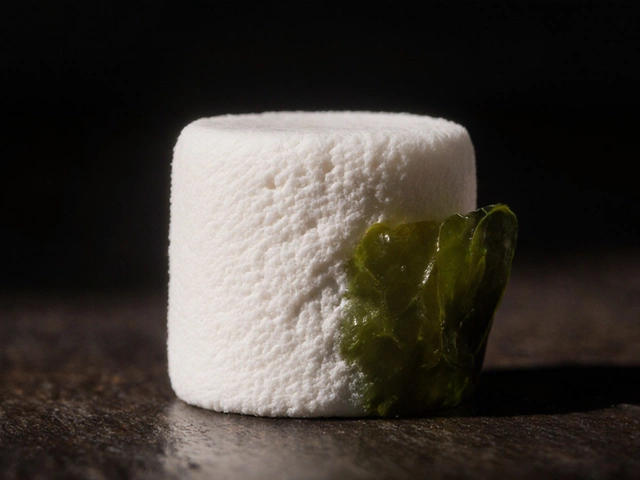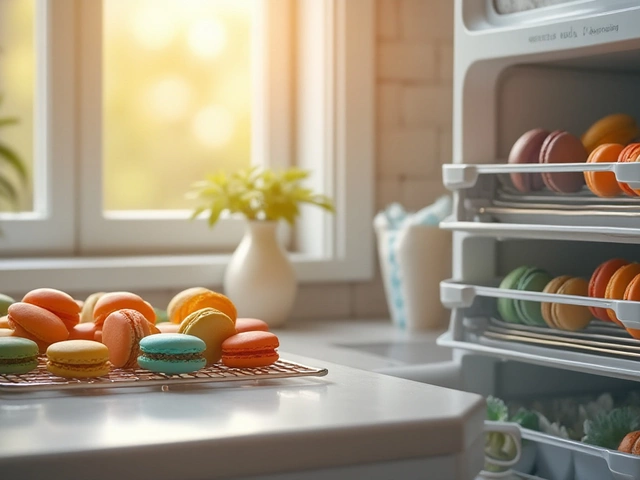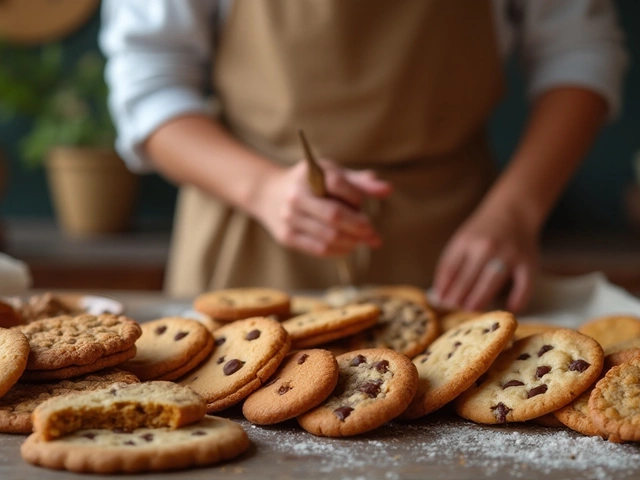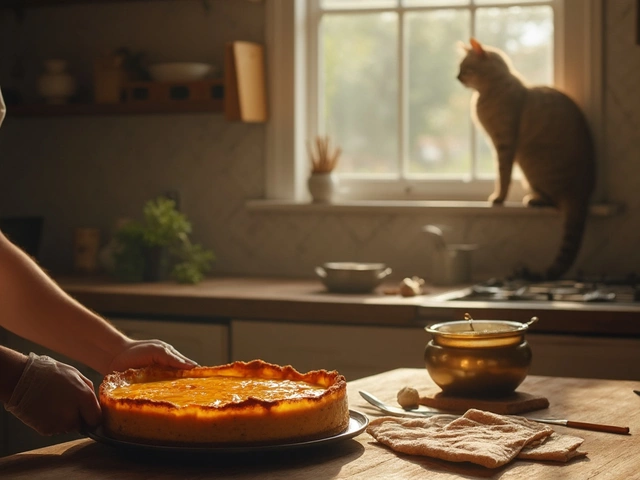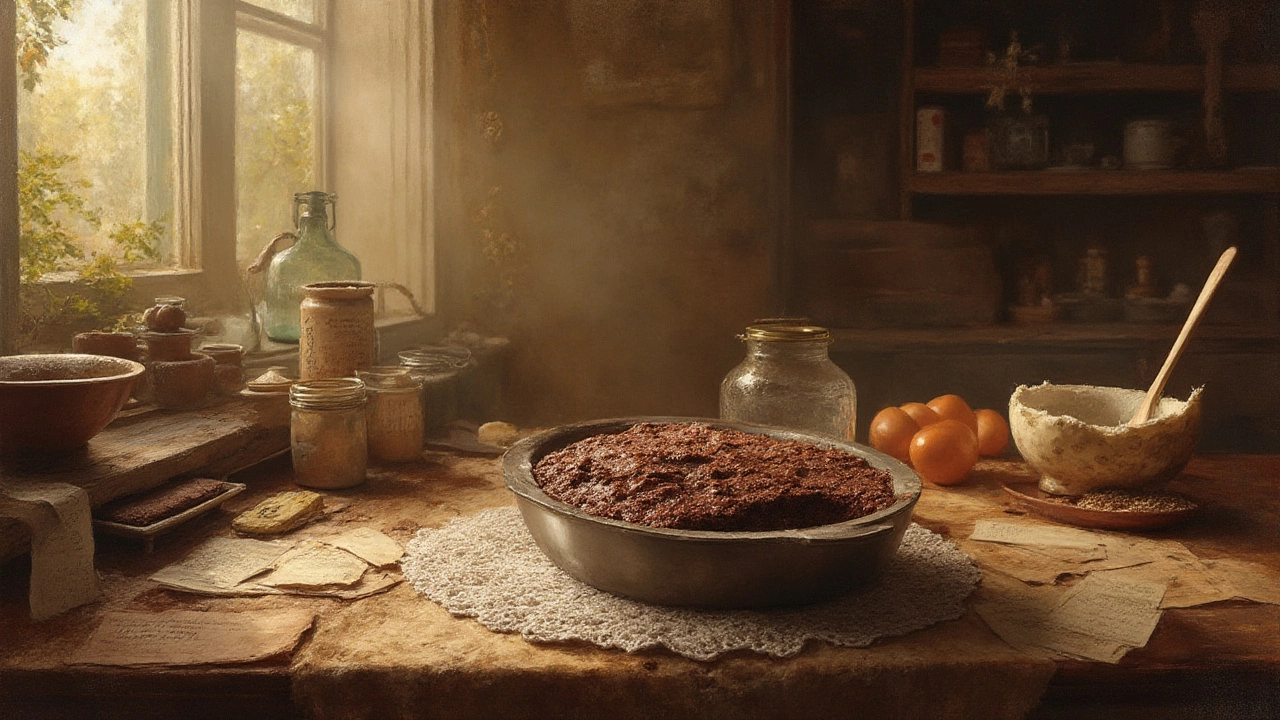
Imagine biting into something that's not quite cake, not quite cookie, and absolutely not a fudge. That's a brownie, the crackly-topped classic that has managed to make a serious impact on dessert lovers everywhere. Brownies attract the die-hards—those who fight for the chewy edge-piece, the loyal fans of the gooey center, and the creative chefs who toss everything from chili powder to cheesecake into the mix. But what type of dessert are brownies, really? Turns out, this simple square has way more personality and history than most people expect.
The Origins of Brownies: More Than Just Chocolate Cake
Brownies didn't always exist in the way we know them now. Back at the 1893 World's Columbian Exposition in Chicago, a chef at the Palmer House Hotel whipped up something new for Bertha Palmer—she wanted a portable, rich dessert for ladies attending the fair. The result? A dense, chocolate treat with walnuts and an apricot glaze. That early recipe looks and tastes a lot like what we would now call a brownie, though it was fancier than the ones found at bake sales today. By 1906, the Boston Cooking-School Cook Book gave us the first real "brownie" recipe people might recognize. But here's the kicker: brownies only use a fraction of the flour found in cakes, and they rely on eggs and less leavening. That's why they come out with that dense, fudgy feel instead of being all light and fluffy.
Weirdly enough, brownies were almost an accident—some stories say someone was baking a chocolate cake and forgot to add baking powder. Instead of tossing the flat cake, they served it up, and people loved it. Pretty wild how a mistake can turn into an American classic, right? Today, you'll see brownies in nearly every American bakery or home. The US even ranks brownies as a top five homemade dessert. According to a 2023 confectionery industry report, about 74% of American households baked brownies at least once a year.
There's something about their simplicity and flexibility that made brownies explode in popularity. The recipe evolved quickly: some added nuts, others swirled in caramel or peanut butter. Coffee shops in the 1980s and 1990s took brownies to the next level and opened the door to premium mixes, vegan options, gluten-free blends, and all the indulgent add-ins you see today. The classic brownie can be whatever you want it to be—as long as it keeps that unique, dense, chocolatey bite.
So, What Type of Dessert Are Brownies?
People argue about this more than you'd expect, given how uncontroversial brownies seem. They're not quite a cake, since they're denser, chewier, and don't rise as much. They aren't cookies, because you cut them instead of scooping single portions. They aren't fudge—even though they're chocolatey and rich, they don't have the crystal-smooth melt or the sheer sugary punch of real fudge. Brownies sit in their own sweet spot, somewhere between a dense cake and a bar cookie. Professional bakers usually place them in the "bar dessert" category. Bar desserts are baked in a slab and cut after cooling, and they usually contain less flour than cakes to get that chewy, almost gooey texture. If you've ever made blondies—they're brownies' buttery, chocolate-free sibling—it's the same category.
The trick to understanding brownies is knowing that small changes create big differences. Add a little more flour and bake a couple minutes longer, and you get a cakelike brownie. Use less flour and more butter, and it's denser and fudgier. Adjust sugar, and the crackly top might not show up. Add melted chocolate instead of cocoa powder and you get a different richness. This makes brownies one of the most customizable desserts out there.
- Fudgy brownies use less flour, more fat, and a shorter bake time
- Cakey brownies include more flour and sometimes milk or baking powder
- Chewy brownies land in the middle, often using a mix of melted butter and oil
The classic American brownie has inspired countless international versions. In recent years, Japan and South Korea have caught brownie fever, tweaking recipes to fit local palates. In France, you might spot a “brownie au chocolat” with high-end dark chocolate and no nuts, while Brazil’s “brownie de chocolate” tends to go heavy on cocoa and might even feature dulce de leche for extra sweetness. Brownies have gone global, but they never quite lose their American dessert bar roots.
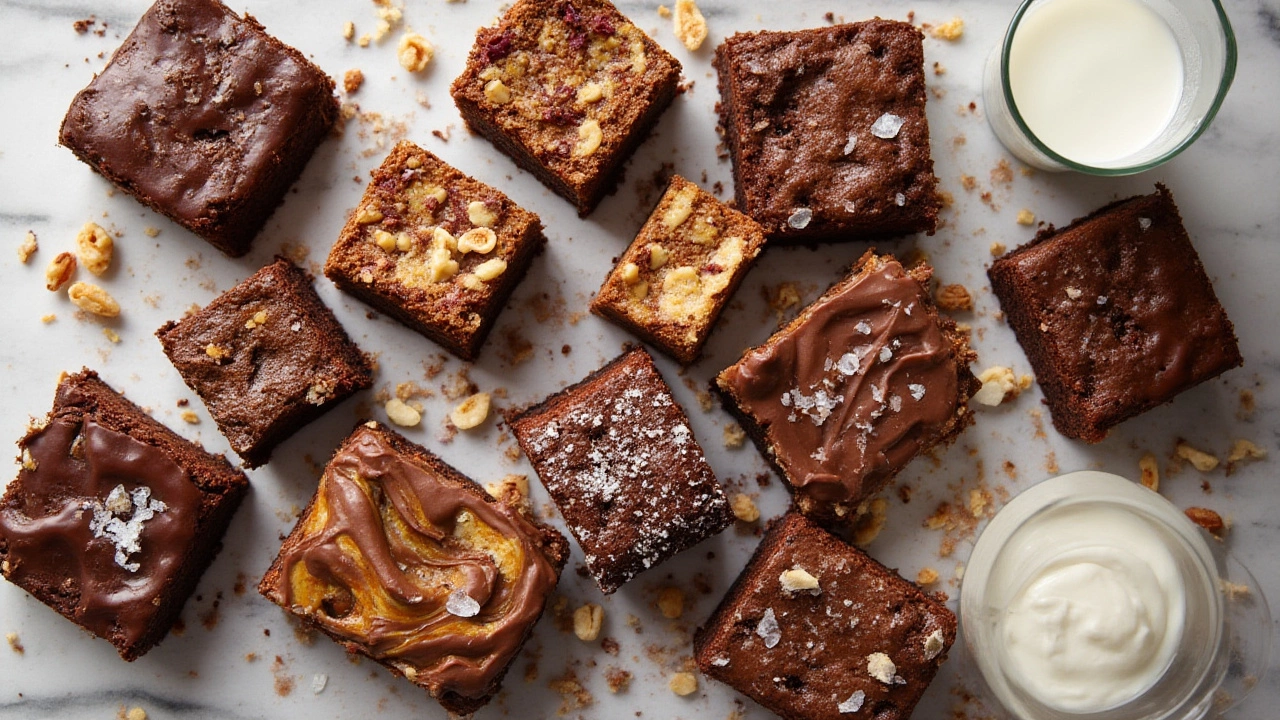
Brownies vs. Other Chocolate Desserts
So why do brownies deserve their own place on the dessert roster? Think about the texture—brownies have that soft chew, the signature craggy top, and a chocolate richness that's not quite like chocolate cake or cookies. They work perfectly with endless flavors—from classic walnuts to mint, raspberry, tahini, or cookie butter. Compare a brownie to a flourless chocolate cake: the latter is mousse-like and decadent, using beaten egg whites for lightness. A brownie packs its punch with flour and eggs beaten just enough for structure, giving you that hearty, satisfying texture.
Brownies are also uniquely functional as a dessert base. Some people bake them, cool them, and stack them with ice cream and fudge for sundaes. Others crumble them into shakes or top them with whipped cream and fruit. Ever heard of a brookie? That’s where brownies and cookie dough hang out in the same pan. In the last few years, food trucks and Instagram bakers have cooked up brownies stuffed with anything from peanut butter cups to caramel popcorn. The possibilities are ridiculous—and that's part of their charm.
To drive this home, here’s a quick snapshot that compares brownies to other popular chocolate desserts:
| Dessert | Main Texture | Main Ingredients | Preparation Style |
|---|---|---|---|
| Brownie | Chewy/Fudgy | Butter, sugar, eggs, chocolate/cocoa, flour | Baked in pan, cut in squares |
| Chocolate Cake | Light/Airy | Butter, sugar, eggs, flour, baking powder, cocoa | Baked, often layered or frosted |
| Chocolate Cookie | Crispy/Chewy | Butter, sugar, eggs, flour, baking soda, cocoa | Baked, drop or shaped |
| Fudge | Smooth/Firm | Sugar, butter, condensed milk, chocolate | Cooked on stovetop, poured into bars |
See how brownies fill a unique spot? They're not a copycat of any other treat.
Tips for Making Perfect Brownies Every Time
Great brownies aren’t rocket science, but getting them *just right* is surprisingly easy to mess up if you’re not careful. Start with quality chocolate or cocoa powder—a cheap brand will make brownies taste flat. If you like that shiny, crackly top, the secret is beating the eggs and sugar together thoroughly before mixing in your melted chocolate or butter. Overmixing after the flour goes in, though, is a no-no. Just fold until combined or you’ll end up with tough, rubbery brownies.
Here’s a checklist that pretty much guarantees brownie success:
- Use unsalted butter so you control the salt level
- Melt the chocolate gently—not in the microwave blast mode, which can easily scorch it
- Always line your pan with parchment, so you don’t have to chisel brownies out
- Let brownies cool completely before cutting—otherwise, they’ll fall apart or turn gummy
- Underbake slightly if you like them gooey; bake a bit longer for cake-like brownies
- Store at room temperature for up to 3 days, or freeze extras for future cravings
If you want to experiment, try swirling in espresso powder, sprinkling flaky salt on top, or folding in pretzels for that salty-sweet contrast. Brownies play very nicely with fun inclusions like dried fruit, coconut flakes, or even chili for some heat. And here’s a neat hack: add a teaspoon of vanilla or almond extract for an instant flavor boost.
Some bakers swear by different pans, too. Glass pans produce softer brownies, while metal pans give more even, crispy edges. For thick, bakery-style brownies, use a smaller pan than the recipe calls for and increase baking time slightly. To get perfect slices, dip your knife in hot water and wipe between cuts. The difference between a pro-looking tray and a hacked-up mess is just a couple extra steps!
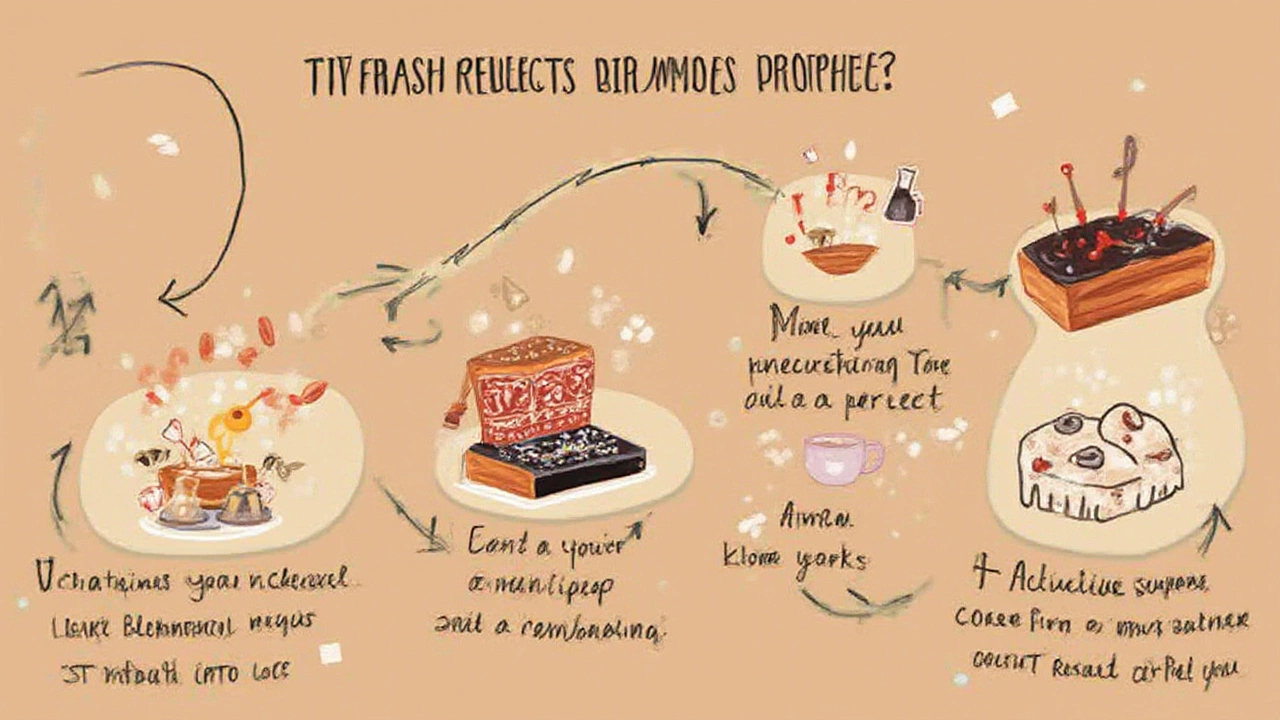
Surprising Brownie Variations Loved Around the World
It’s not just about plain chocolate anymore. Take lemon brownies—a totally different flavor, but styled with the same formula for dense chew. Mint brownies are big in the Midwest right now, and peanut butter swirl varieties have devoted fans everywhere. Even in the vegan and gluten-free world, brownies are massive—almond flour or chickpea-based brownies taste shockingly good, and black bean brownies offer a sneaky way to cut down on sugar and fat.
The UK sometimes adds golden syrup and self-raising flour for a fluffier texture, while Germany’s “brownies mit kirschen” often have sour cherries layered inside. There’s even a fad for "brownie lava cakes"—think brownies with a molten, pudding-like chocolate center that blows regular lava cake out of the water in richness.
- Brazil: Dulce de leche swirl brownies are a street food staple
- India: Cardamom and pistachio brownies have a fan base in urban bakeries
- Australia: Tim Tam brownies (with crushed Tim Tam biscuits inside)
- Japan: Matcha (green tea) brownies for a unique earthy bite
- USA: Salted caramel and “avocado brownies” have both gone viral in the last two years
If you want to bake a tray that stands out at the next party, try a layer of cookie dough over your brownie base, or fill the middle with marshmallow crème before baking. Kids lose their minds for brownies topped with colored sprinkles or baked with Oreos stuffed inside. And if you’re feeling really wild, try a savory twist—dark chocolate, chili, and smoked paprika for a surprisingly good grown-up treat.
Baking tech has also changed the brownie world. Smart ovens let bakers set hyper-precise temperatures, with sensors to track "doneness" so your brownies never go dry. Freeze-dried fruit powders, protein powders, and sweetener blends—brownies are keeping up with all the food trends without losing their old-school appeal.
People love brownies because they’re a blank canvas. You can make them decadent or light, classic or crazy, gluten-free, dairy-free, nut-free—whatever you like. But no matter where you are in the world or what extras you add, brownies are still in a league of their own. They bring everyone together, they taste like comfort, and they’ll never go out of style. The next time you whip up a batch, remember you’re taking part in more than 130 years of tasty history, creativity, and a touch of kitchen luck that turned a baking mistake into everyone’s favorite dessert bar.

